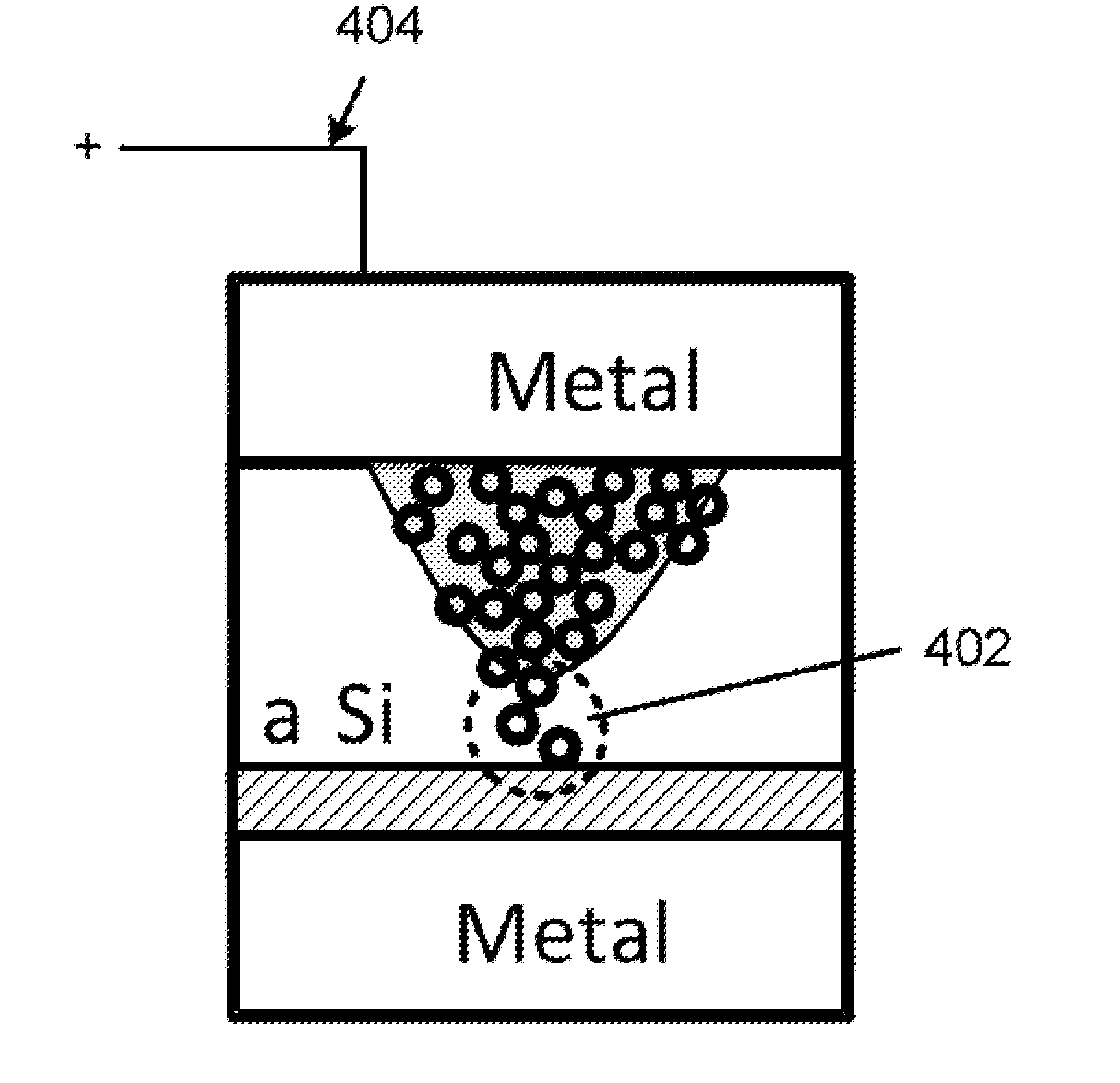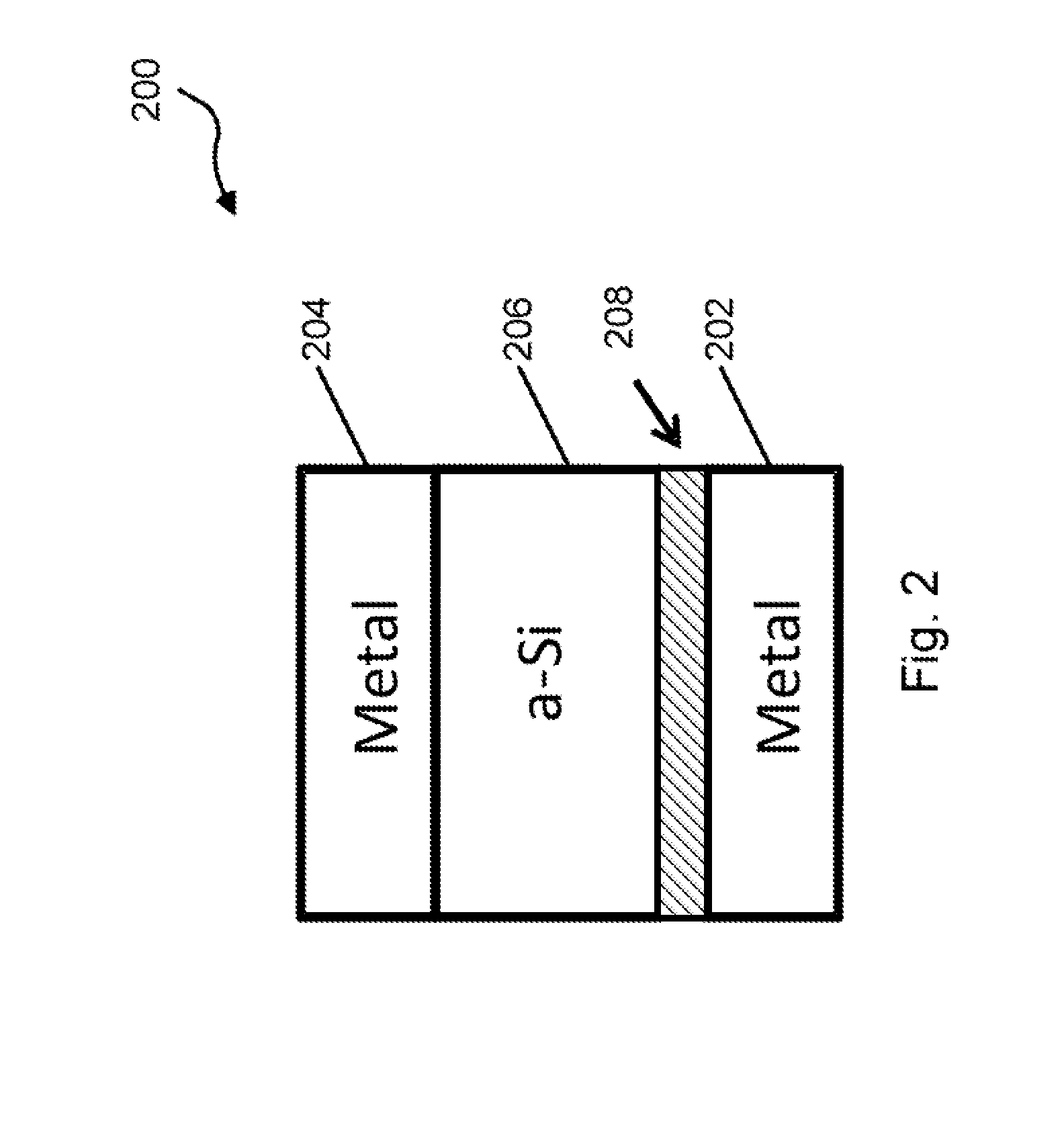Device switching using layered device structure
a device structure and device technology, applied in semiconductor devices, digital storage, instruments, etc., can solve the problems of increasing power dissipation, preventing proper device operation, and non-scaling of sub-threshold slopes, so as to improve switching and endurance properties, reduce state current, and high defect region
- Summary
- Abstract
- Description
- Claims
- Application Information
AI Technical Summary
Benefits of technology
Problems solved by technology
Method used
Image
Examples
Embodiment Construction
[0016]The present invention is related to switching devices. More particularly, the present invention provides a structure for a resistive switching memory device. The resistive switching memory device is characterized by a reduced on state current for improved switching and endurance properties, among others.
[0017]Resistive switching memory device using a non-crystalline silicon such as amorphous silicon, amorphous-polysilicon and microcrystalline silicon as a switching material and metal electrodes has shown promises in a new class of high density memory devices for fast switching. As merely for illustration, amorphous silicon is used to describe non-crystalline silicon. The on / off behavior of the device depends on metal particles formed in defect sites within the amorphous silicon material. Due to mismatch of materials, defect level in an interface region formed from the amorphous silicon material and a metal electrode is high. As metal particles are formed in the defect sites of...
PUM
 Login to View More
Login to View More Abstract
Description
Claims
Application Information
 Login to View More
Login to View More - R&D
- Intellectual Property
- Life Sciences
- Materials
- Tech Scout
- Unparalleled Data Quality
- Higher Quality Content
- 60% Fewer Hallucinations
Browse by: Latest US Patents, China's latest patents, Technical Efficacy Thesaurus, Application Domain, Technology Topic, Popular Technical Reports.
© 2025 PatSnap. All rights reserved.Legal|Privacy policy|Modern Slavery Act Transparency Statement|Sitemap|About US| Contact US: help@patsnap.com



